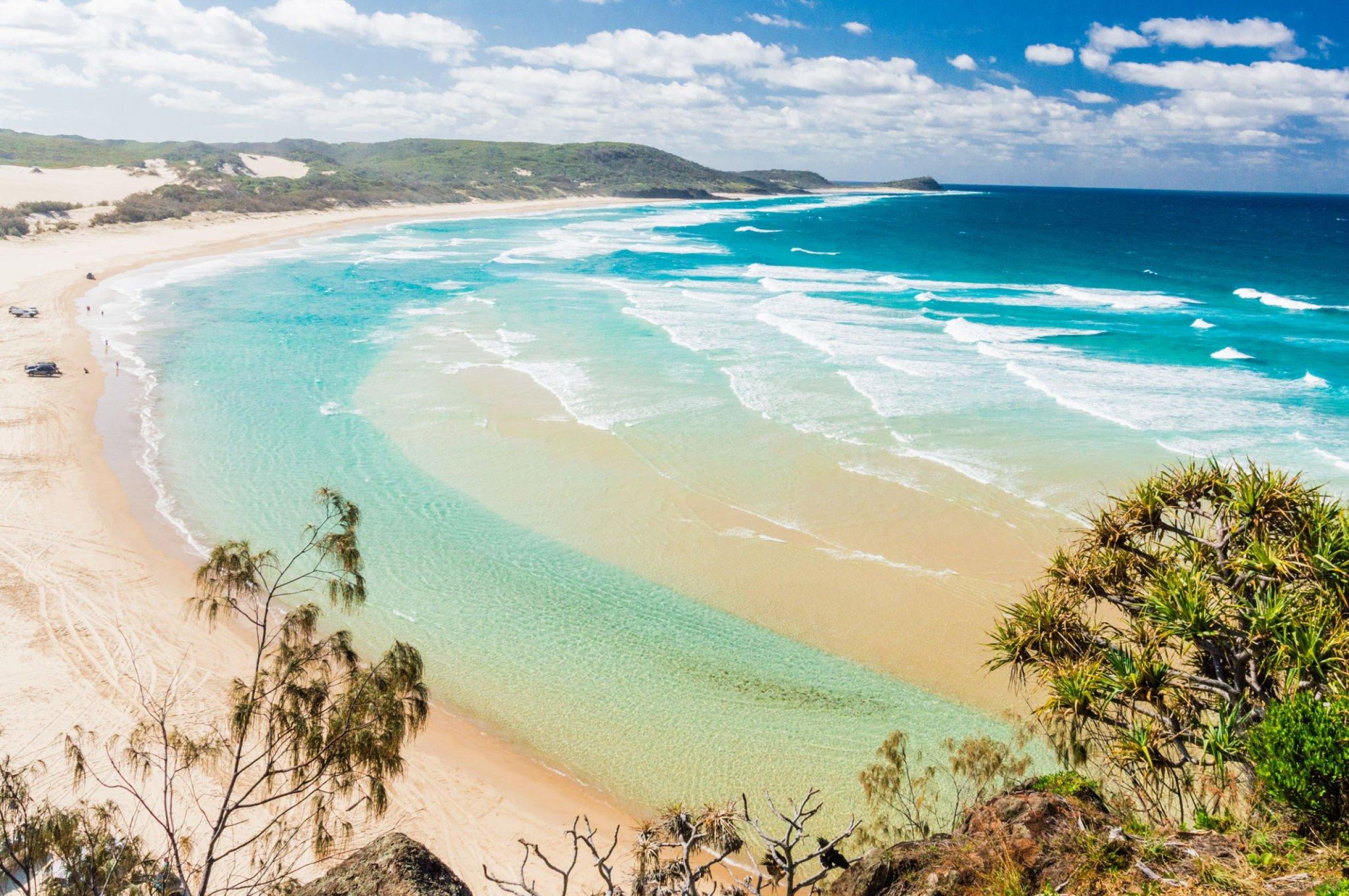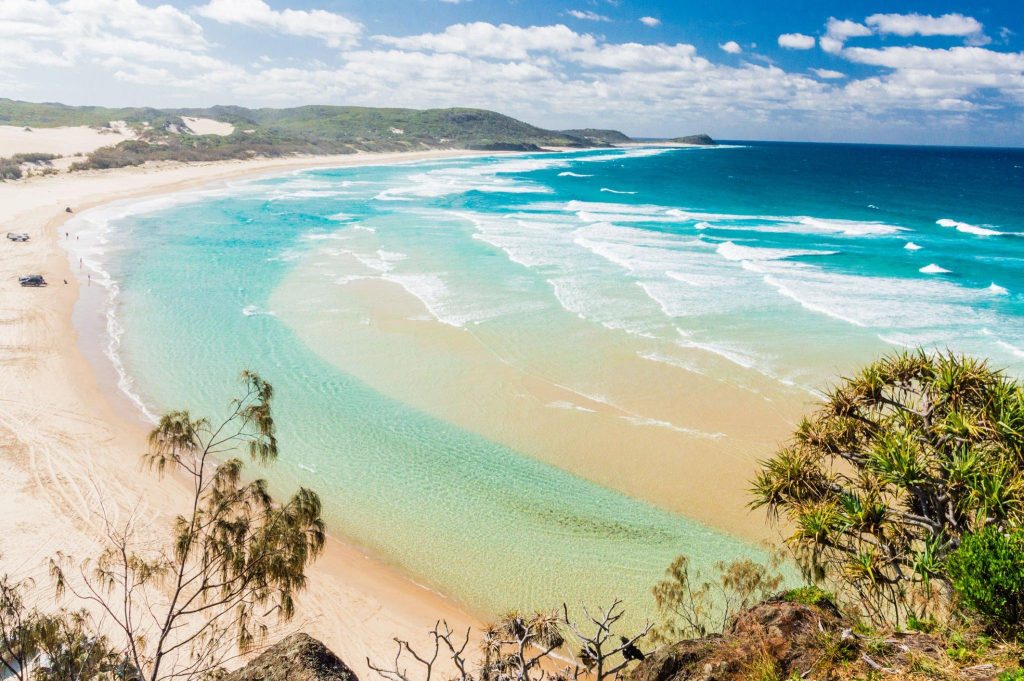
Fraser Island, situated off the coast of Queensland, Australia, is renowned for its exceptional natural beauty and unique features. This World Heritage-listed island is famous for being the largest sand island globally, hosting a diverse range of ecosystems within its confines.
Its stunning white sandy beaches stretch for over 75 miles, meeting the crystal-clear waters of the Pacific Ocean. Fraser Island’s lush rainforests, fed by freshwater streams and perched on ancient sand dunes, create a striking contrast against the coastal landscape.
The island of Fraser, located off the eastern coast of Australia, is a place of natural wonders and intriguing historical artifacts. Among its many attractions, you’ll find a collection of stunning freshwater lakes, with the iconic Lake McKenzie standing out with its crystal-clear azure waters. For history enthusiasts, the Maheno Shipwreck is a captivating highlight.
This eerie remnant of a stranded ship adds a touch of mystery to the island’s rich history. If you’re interested in discovering more about remarkable places like Fraser Island and their unique characteristics, delve into “NJ’s Notable Traits,” a page that explores the distinctive features of destinations around the world.
Fraser Island’s status as a natural wonderland, home to unique flora and fauna, draws tourists and nature enthusiasts from around the world, making it a truly distinctive and captivating destination.
Contents
Overview of Fraser Island
Fraser Island, located off the coast of Queensland, Australia, is a natural wonder that captivates with its unparalleled beauty and ecological significance.
As the world’s largest sand island, Fraser Island is a UNESCO World Heritage site, boasting diverse ecosystems that range from lush rainforests to towering sand dunes and crystal-clear freshwater lakes.
Its unique landscape, formed over thousands of years, provides a haven for a plethora of plant and animal species, some of which are found nowhere else on the planet.
Visitors are drawn to the island’s iconic sites, such as the vibrant sands of the Pinnacles and the renowned Seventy-Five Mile Beach, which also serves as an unconventional highway for four-wheel-drive vehicles.
The island’s rich Aboriginal heritage adds another layer of cultural significance, as it has been home to the Butchulla people for generations.
With its awe-inspiring vistas, biodiversity, and blend of natural and cultural heritage, Fraser Island stands as a testament to the extraordinary wonders that the natural world has to offer.
Unique Sand Dunes
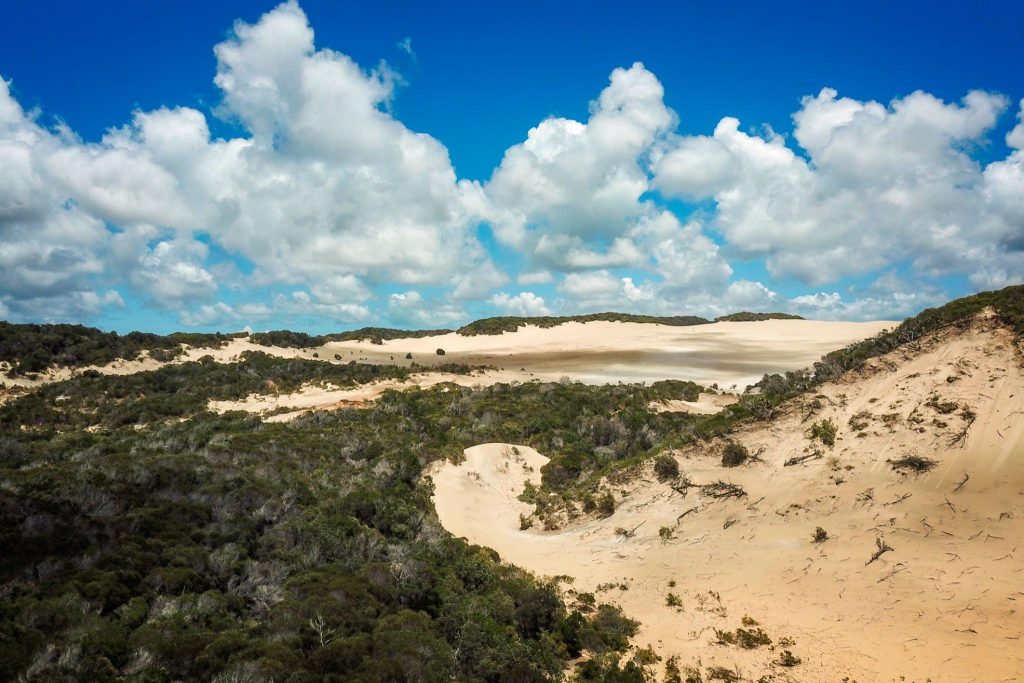
Nature never ceases to amaze with its intricate creations, and one of its most captivating marvels is the world of unique sand dunes.
These undulating landscapes, sculpted by the wind’s patient hand, hold a mysterious allure that beckons adventurers and dreamers alike. For those eager to explore and discover the highlights of New Jersey’s natural wonders, visit the page on Exploring NJ’s Highlights to uncover the Garden State’s remarkable landscapes and attractions.
From the towering dunes of the Namib Desert, where burnt-orange sands stretch as far as the eye can see, to the ethereal curves of the White Sands National Monument, where powdery gypsum dunes mimic a winter wonderland under the blazing sun, these formations defy conventional expectations.
Each dune tells a story of time’s passage, as grains of sand dance and shift with every breeze, creating ever-changing shapes and patterns. These natural wonders remind us of the Earth’s astounding diversity and resilience, and they inspire us to explore the delicate balance between nature’s creative force and its relentless elements.
Freshwater Lakes
Freshwater lakes are serene and vital ecosystems that play a crucial role in supporting diverse aquatic life and providing essential resources for both humans and wildlife.
These bodies of water, characterized by their relatively low salt content, are integral to the water cycle as they receive precipitation and runoff from surrounding land.
Freshwater lakes offer numerous benefits, serving as sources of drinking water, irrigation for agriculture, and recreational sites for fishing, boating, and swimming. They also contribute to local climates by moderating temperature extremes and influencing humidity levels.
These habitats, renowned for their ecological significance, house a diverse array of species, ranging from microscopic plankton to sizable fish, amphibians, and waterfowl. These ecosystems form intricate food chains and play a vital role in fostering biodiversity.
Nevertheless, as growing human populations continue to encroach upon their boundaries and industrial activities and pollution escalate, the health of freshwater lakes faces significant threats. If you’re interested in learning more about iconic New Jersey attractions and the state’s efforts to protect its natural treasures, be sure to check out the page on “Iconic NJ Attractions” on TalesofTravelers.com.
It is imperative that we prioritize conservation efforts to preserve these invaluable ecosystems for future generations and maintain the delicate balance they bring to our planet’s ecology and well-being.
Rainforests on Sand
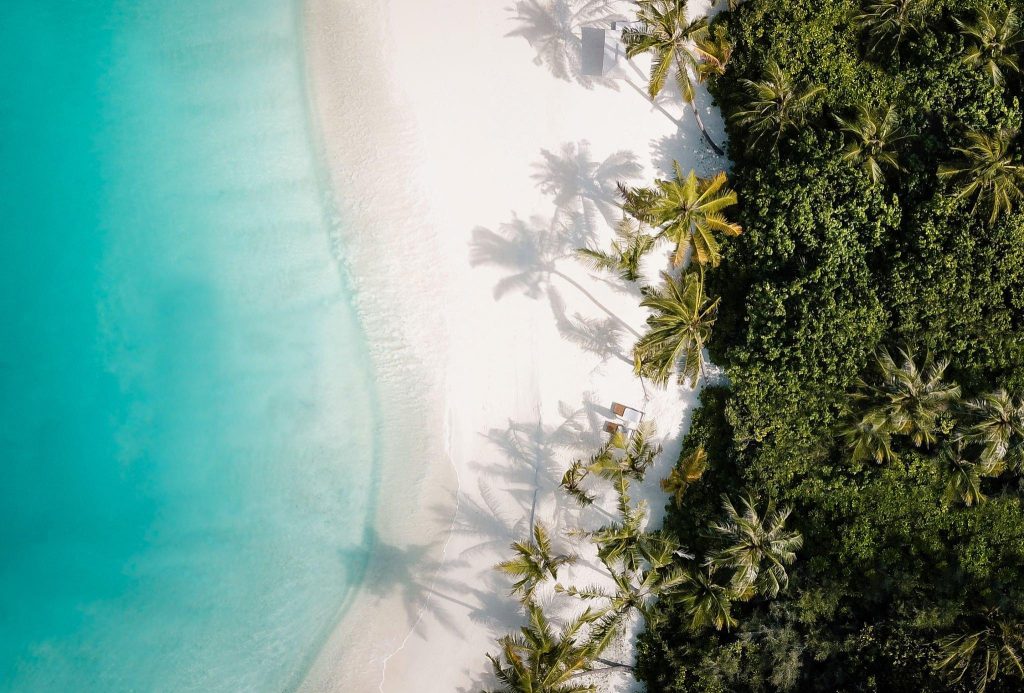
Rainforests on sand offer a captivating and distinctive ecological spectacle, defying conventional notions of forest ecosystems. These remarkable environments challenge expectations by flourishing in nutrient-poor sandy soils, which are typically considered inhospitable to lush vegetation.
For instance, the Natural Beauty of Illinois is one of many unique ecosystems that showcase the diversity of nature. To delve deeper into this topic, you can explore “Natural Beauty of Illinois” on TalesofTravelers.com.
A prime example is the Brazilian coastal region’s Restinga forests, where a complex web of plant species has adapted to survive in this nutrient-limited setting. These rainforests exhibit incredible biodiversity, with plant species evolving specialized mechanisms to extract and retain nutrients.
From towering trees to intricate ground cover, these adaptations enable the ecosystem’s resilience and sustainability. The study of rainforests on sand not only deepens our understanding of nature’s adaptive prowess but also underscores the urgent need for conservation efforts in these delicate habitats, as they face mounting threats from human activities and climate change.
Native Dingoes
Nestled within the heart of the rugged landscape lies a haven for wildlife enthusiasts and conservationists alike – the Wildlife Haven. This sanctuary serves as a crucial habitat for a diverse array of native species, among them the captivating and enigmatic Australian Dingoes.
As guardians of this pristine environment, the caretakers of this sanctuary are committed to upholding the natural balance and safeguarding the rich biodiversity that thrives within its boundaries.
If you’re interested in learning more about New Jersey’s historical legacy and how it intersects with the state’s natural wonders, visit the page on “Best NJ’s Historical Legacy” at TalesofTravelers.com.
This informative resource will provide you with valuable insights into what New Jersey is known for and its historical significance.
Amidst the rustling eucalyptus trees and sprawling grasslands, the haunting calls of Dingoes echo, a reminder of the ancient connection between these creatures and the land.
Amidst the tranquil setting, educational initiatives are woven seamlessly, raising awareness about these remarkable canines and their significance in the local ecosystem.
By bridging the gap between conservation and community, the Wildlife Haven not only safeguards the native Dingoes but also celebrates their role as an intrinsic part of Australia’s natural heritage, all while fostering a profound appreciation for them in the English language.
Varied Birdlife
The concept of “Varied Birdlife” encapsulates the captivating diversity of avian species that grace our planet. With over 10,000 different bird species scattered across diverse habitats, these winged wonders epitomize the beauty of nature’s creativity.
From the vibrant plumage of tropical parrots to the majestic soaring of eagles in rugged landscapes, each species contributes its unique charm to the tapestry of life. Beyond their aesthetic allure, birds play crucial ecological roles as pollinators, seed dispersers, and indicators of ecosystem health.
If you’re passionate about wildlife and want to explore more of nature’s wonders, consider delving into the incredible biodiversity found in Romania. Learn more about Exploring Romanian Wonders on Tales of Travelers to discover the diverse and captivating natural landscapes that this European country is known for.
Their diverse behaviors, calls, and migration patterns have inspired cultures, art, and even scientific studies. The English language, a powerful tool for expression, seeks to encapsulate this rich diversity in words that describe not only the birds’ physical traits but also their behaviors, habitats, and the emotions they evoke in human observers.
In an ever-changing world, the presence of varied birdlife reminds us of the importance of conservation, inspiring awe and fostering a deeper connection to the natural world.
Historical Significance
The historical significance of the English language is undeniable, spanning centuries and continents. Originating from the fusion of Germanic dialects brought by Anglo-Saxon settlers to England, it evolved through a dynamic process of assimilation and adaptation.
The Norman Conquest of 1066 ushered in French influences, which played a pivotal role in shaping the English language into what we now know as Middle English. Over centuries, the global reach and impact of English underwent a remarkable expansion, largely thanks to British colonialism, international trade, and cultural exchanges.
Consequently, English evolved into a lingua franca, fostering seamless communication among diverse communities. For those interested in exploring hidden gems within the United States, especially in New Jersey, check out the page on “Best Hidden Gems in NJ” on Tales of Travelers for an insider’s guide to what this vibrant state is known for.
Moreover, pivotal literary works by renowned figures like Shakespeare and Chaucer contributed to its rich literary heritage. The spread of English through colonization led to its status as a global language of diplomacy, business, science, and technology.
Today, English stands as a bridge connecting cultures, a medium for international discourse, and a testament to the intricate interplay of history and linguistic evolution.
SS Maheno Shipwreck
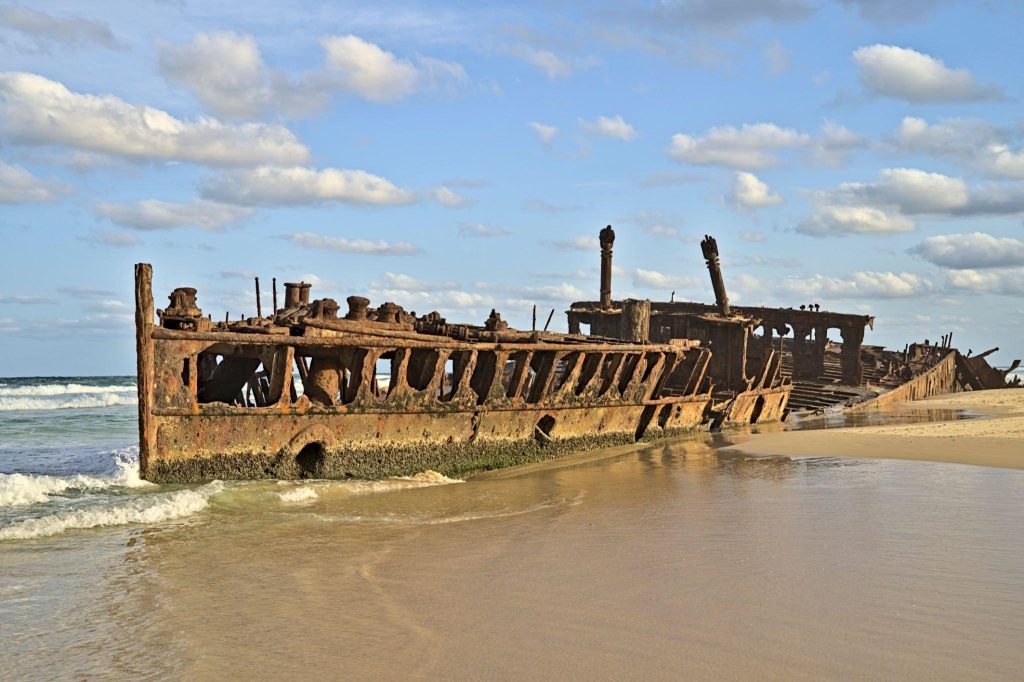
The SS Maheno shipwreck stands as a haunting relic on the shores of Fraser Island, Australia, narrating a tale of both maritime history and natural beauty. Once a luxurious ocean liner, the Maheno met its fate in 1935 when a cyclone tore it from its towline and stranded it on the island’s sandy beach.
Over the decades, the elements have transformed the vessel’s structure into a striking blend of rusted metal and weathered remnants. This shipwreck now serves as a poignant reminder of the unpredictable forces of nature and the transitory nature of human achievements.
It has become an iconic landmark for tourists and photographers, offering an eerie juxtaposition of man-made engineering against the backdrop of untamed coastal wilderness. The SS Maheno shipwreck embodies the captivating intersection of history, nature, and the inexorable passage of time.
Butchulla People
The Butchulla People, an Indigenous Australian group, have a rich cultural heritage deeply intertwined with the land they inhabit. They reside primarily on Fraser Island, also known as K’gari, located off the eastern coast of Queensland.
The Butchulla People have a profound connection to their environment, having maintained traditional practices, languages, and spiritual beliefs for generations.
The English language, while not their native tongue, has inevitably become an integral part of their daily interactions due to historical influences. Despite this, the Butchulla People strive to preserve their unique identity and linguistic heritage, passing down stories, songs, and knowledge through oral traditions.
Efforts are being made to revitalize their native language and traditions, allowing younger generations to reconnect with their roots and keep their cultural flame burning brightly.
Through these initiatives, the Butchulla People demonstrate their unwavering commitment to honoring their past while embracing the challenges of the present.
Adventure and Activities
Engaging in various adventures and activities not only enhances one’s physical prowess but also nurtures a sense of curiosity and exploration. The English language, often considered a gateway to new worlds, aligns seamlessly with the spirit of adventure.
Through literature, we traverse distant lands, unravel mysteries, and meet diverse characters, all while expanding our linguistic horizons. Whether scaling towering peaks or delving into the depths of the ocean, the ability to communicate effectively in English becomes an invaluable tool.
From crafting exhilarating narratives to participating in cross-cultural exchanges, the language empowers individuals to embark on intellectual journeys and conquer uncharted territories.
Much like an adventure itself, mastering English requires dedication, practice, and a willingness to embrace the unknown. Ultimately, the fusion of adventure and the English language offers a dynamic synergy that fuels personal growth and endless exploration.
4WD Adventures

Embarking on 4WD adventures unlocks a realm of thrilling exploration and rugged beauty. The allure lies in the promise of venturing beyond the well-trodden paths, delving into landscapes where asphalt yields to untamed terrain. English language becomes the bridge that connects enthusiasts to these immersive experiences.
From navigating rocky trails to conquering muddy tracks, communication is key to ensure a safe and successful journey. English proficiency empowers adventurers to comprehend trail markers, decipher maps, and coordinate within a group, fostering camaraderie and teamwork.
Moreover, it enables them to respect the environment, following ethical practices that preserve nature’s splendor for generations to come. As the wheels of 4WD vehicles churn through diverse topographies, the English language becomes more than just words; it evolves into an instrument of discovery and unity amidst the vastness of the wilderness.
Camping Under the Stars
Camping under the stars is a captivating and exhilarating experience that reconnects individuals with nature’s awe-inspiring beauty. As the sun sets and the sky transforms into a canvas of twinkling stars, the allure of the great outdoors takes on a new dimension.
The soothing crackle of a campfire and the faint rustling of leaves amplify the sense of tranquility, reminding us of life’s simple pleasures. Far from the urban chaos, one can truly appreciate the vastness of the universe above and the serenity it brings.
The velvety darkness of the night sky, studded with constellations and the occasional shooting star, fosters a sense of wonder and introspection.
Camping under the stars not only offers an escape from the hustle and bustle but also provides a chance to forge deeper connections with fellow campers as stories are shared, laughter echoes, and genuine bonds are formed.
It’s a cherished opportunity to detach from technology, embrace the primal rhythms of nature, and create enduring memories under the celestial canopy.
Conclusion
Fraser Island, renowned as the largest sand island globally, holds a place of exceptional distinction in Australia’s natural and cultural tapestry. This island jewel is celebrated for its distinctive features that encompass captivating landscapes, unique ecosystems, and a rich Indigenous heritage.
Its fame rests on the ethereal beauty of freshwater lakes ensconced amidst ancient dunes, such as the iconic Lake McKenzie and Lake Wabby. Fraser Island’s luxuriant rainforests, nurtured by nutrient-rich sands, stand as living testaments to nature’s resilience.
The island’s renowned 75-Mile Beach doubles as both a highway and an arresting seascape, while the rusted remains of the SS Maheno evoke the island’s maritime history.
Moreover, Fraser Island’s significance lies in its custodianship by the Butchulla people, a heritage woven into the land’s fabric for millennia.

